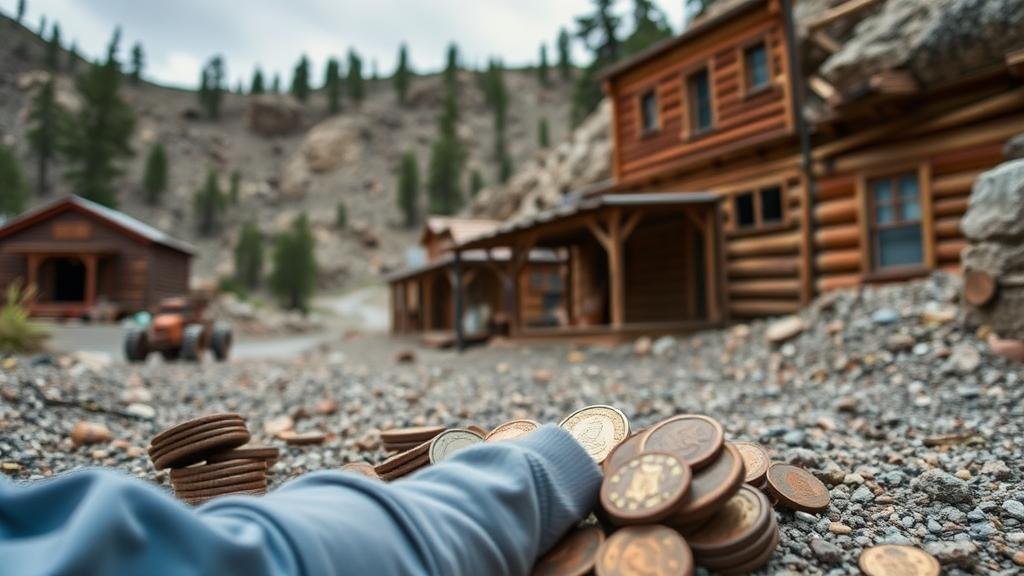Recovering Buried Caches of Coins in Deserted Mining Towns
Recovering Buried Caches of Coins in Deserted Mining Towns
The allure of buried treasure has captivated adventurers for centuries, and nowhere is this fascination more pronounced than in deserted mining towns across North America. These once-thriving settlements, often abandoned due to resource depletion or economic downturns, hold the potential for hidden caches of coins and valuable artifacts. This article explores the methods, techniques, and considerations involved in recovering these buried treasures, providing insights for both amateur treasure hunters and seasoned professionals alike.
The Historical Context of Abandoned Mining Towns
Mining towns emerged rapidly during the gold and silver rushes of the 19th century, with thousands of prospectors flocking to regions such as California, Nevada, and Colorado. Many of these towns, however, were short-lived; once mines ceased to yield profitability, their populations dwindled. Historical records indicate that some miners took their wealth with them when they left, while others buried their riches in the surrounding landscape, hoping to return one day.
For example, the mining town of Bodie, California, once boasted a population of over 10,000 people at its peak but was nearly deserted by 1910. Artifacts and coins from this period may still lie hidden beneath the towns remnants, waiting to be discovered narrating the stories of those who once lived and worked there.
Tools and Techniques for Recovery
Recovering buried caches of coins requires a variety of tools and techniques, each with its unique applications. Familiarity with modern technology, combined with traditional methodologies, significantly enhances the chances of a successful find.
Metal Detectors
Metal detectors are the primary tools used in treasure hunting. These devices can distinguish between different types of metals, enabling users to identify the presence of coins, gold, silver, and other valuables buried underground. High-quality metal detectors, such as those with Pulse Induction (PI) technology, are particularly effective in challenging environments, including mineralized soils often found in former mining sites.
Ground Penetrating Radar (GPR)
Ground Penetrating Radar is a more advanced tool used for mapping subsurface features. While more expensive, GPR provides a non-destructive means of locating buried objects and can help differentiate between natural and man-made targets. Many professionals use GPR to determine the best areas to excavate, minimizing time and effort.
Excavation Techniques
Once a potential cache has been identified, excavation techniques become crucial. Using hand tools such as trowels, shovels, and even specialized digging implements, treasure hunters should proceed carefully to preserve the integrity of the find. Learning to read soil types and disturbance patterns can provide clues about where caches are located.
Legal Considerations in Treasure Hunting
Understanding and complying with local laws and regulations is essential for any treasure hunting endeavor. In many jurisdictions, rights to found treasures can be complex. For example, the Abandoned Mine Lands (AML) program by the U.S. government may govern access to some mining sites. Depending on the state, certain permits may be required for excavation. Plus, items recovered from public lands may need to be reported to federal authorities.
Case Studies: Successes and Failures
To better illustrate the dynamics of recovering buried caches, several case studies provide valuable lessons.
Success: The Gold Coins of Colorado
In 2017, a group of treasure hunters using metal detectors uncovered a remarkable find near the remains of an old mining shaft in Colorado. discovered over 300 gold coins, many dating from the late 1800s. The group primarily utilized GPR to locate potential hotspots before excavating the ground, demonstrating the value of combining modern technology with traditional methods.
Failure: Illegal Excavation in Nevada
On the other hand, in Nevada, a treasure seeker faced legal repercussions after digging at a protected site without permission. The individual lost all recovered items and received a hefty fine. This case underscores the importance of abiding by local regulations and respecting historical preservation laws.
Actionable Takeaways
- Research the history of abandoned mining towns to identify potential treasure sites.
- Invest in quality tools like metal detectors and consider utilizing GPR for enhanced detection.
- Understand legal requirements for treasure hunting in your target areas to avoid penalties.
- Document your findings and share information with local historical societies for educational purposes.
To wrap up, recovering buried caches of coins in deserted mining towns offers a unique blend of adventure and history. By employing modern technology and adhering to legal guidelines, treasure hunters can not only fulfill their quest for lost wealth but also contribute to the preservation and understanding of Americas rich mining heritage.



